Khan Md Hasib
Deep Fusion Model for Brain Tumor Classification Using Fine-Grained Gradient Preservation
Jun 28, 2024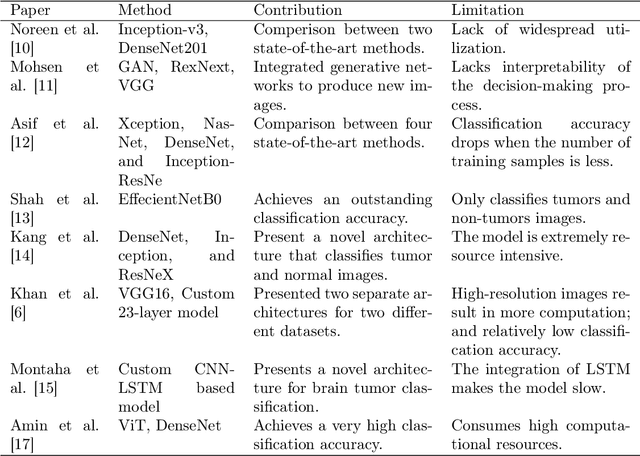
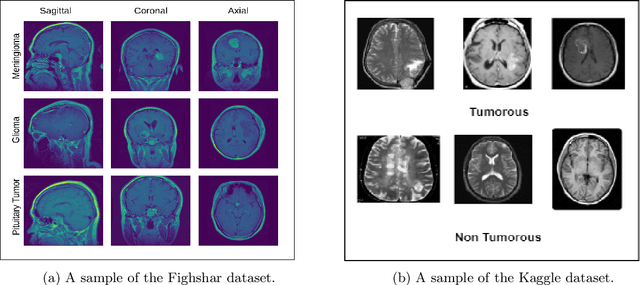
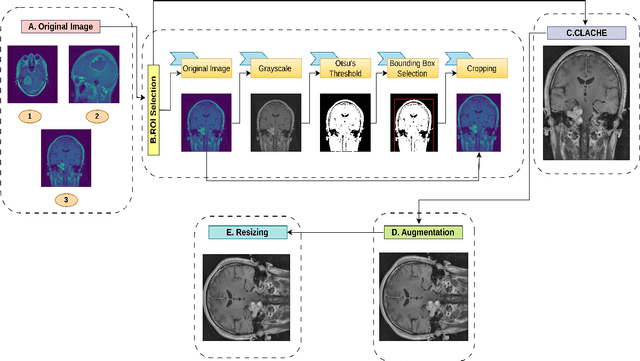
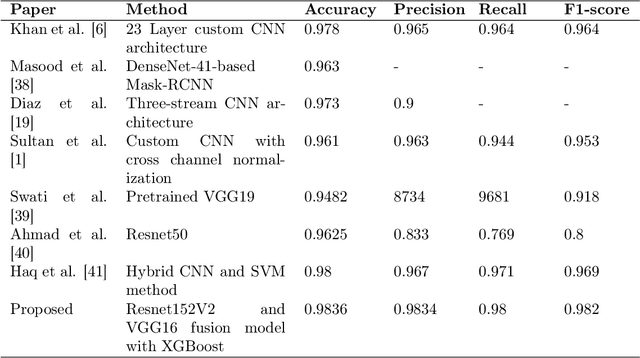
Abstract:Brain tumors are one of the most common diseases that lead to early death if not diagnosed at an early stage. Traditional diagnostic approaches are extremely time-consuming and prone to errors. In this context, computer vision-based approaches have emerged as an effective tool for accurate brain tumor classification. While some of the existing solutions demonstrate noteworthy accuracy, the models become infeasible to deploy in areas where computational resources are limited. This research addresses the need for accurate and fast classification of brain tumors with a priority of deploying the model in technologically underdeveloped regions. The research presents a novel architecture for precise brain tumor classification fusing pretrained ResNet152V2 and modified VGG16 models. The proposed architecture undergoes a diligent fine-tuning process that ensures fine gradients are preserved in deep neural networks, which are essential for effective brain tumor classification. The proposed solution incorporates various image processing techniques to improve image quality and achieves an astounding accuracy of 98.36% and 98.04% in Figshare and Kaggle datasets respectively. This architecture stands out for having a streamlined profile, with only 2.8 million trainable parameters. We have leveraged 8-bit quantization to produce a model of size 73.881 MB, significantly reducing it from the previous size of 289.45 MB, ensuring smooth deployment in edge devices even in resource-constrained areas. Additionally, the use of Grad-CAM improves the interpretability of the model, offering insightful information regarding its decision-making process. Owing to its high discriminative ability, this model can be a reliable option for accurate brain tumor classification.
PotatoGANs: Utilizing Generative Adversarial Networks, Instance Segmentation, and Explainable AI for Enhanced Potato Disease Identification and Classification
May 12, 2024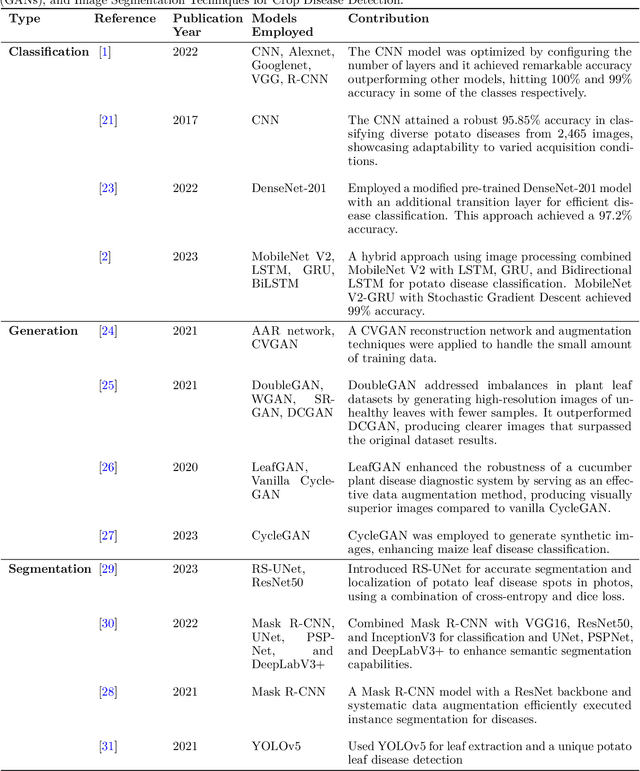
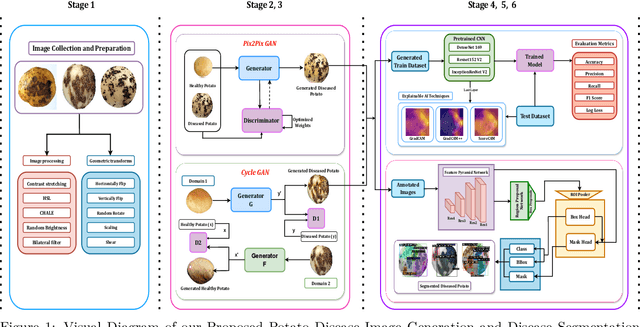

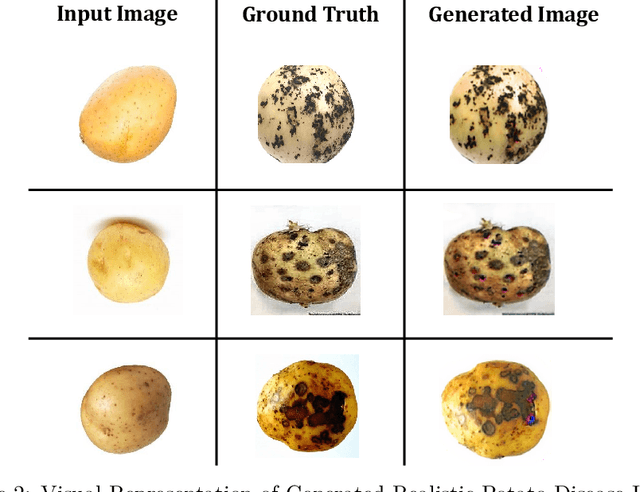
Abstract:Numerous applications have resulted from the automation of agricultural disease segmentation using deep learning techniques. However, when applied to new conditions, these applications frequently face the difficulty of overfitting, resulting in lower segmentation performance. In the context of potato farming, where diseases have a large influence on yields, it is critical for the agricultural economy to quickly and properly identify these diseases. Traditional data augmentation approaches, such as rotation, flip, and translation, have limitations and frequently fail to provide strong generalization results. To address these issues, our research employs a novel approach termed as PotatoGANs. In this novel data augmentation approach, two types of Generative Adversarial Networks (GANs) are utilized to generate synthetic potato disease images from healthy potato images. This approach not only expands the dataset but also adds variety, which helps to enhance model generalization. Using the Inception score as a measure, our experiments show the better quality and realisticness of the images created by PotatoGANs, emphasizing their capacity to resemble real disease images closely. The CycleGAN model outperforms the Pix2Pix GAN model in terms of image quality, as evidenced by its higher IS scores CycleGAN achieves higher Inception scores (IS) of 1.2001 and 1.0900 for black scurf and common scab, respectively. This synthetic data can significantly improve the training of large neural networks. It also reduces data collection costs while enhancing data diversity and generalization capabilities. Our work improves interpretability by combining three gradient-based Explainable AI algorithms (GradCAM, GradCAM++, and ScoreCAM) with three distinct CNN architectures (DenseNet169, Resnet152 V2, InceptionResNet V2) for potato disease classification.
Harnessing Large Language Models Over Transformer Models for Detecting Bengali Depressive Social Media Text: A Comprehensive Study
Jan 14, 2024



Abstract:In an era where the silent struggle of underdiagnosed depression pervades globally, our research delves into the crucial link between mental health and social media. This work focuses on early detection of depression, particularly in extroverted social media users, using LLMs such as GPT 3.5, GPT 4 and our proposed GPT 3.5 fine-tuned model DepGPT, as well as advanced Deep learning models(LSTM, Bi-LSTM, GRU, BiGRU) and Transformer models(BERT, BanglaBERT, SahajBERT, BanglaBERT-Base). The study categorized Reddit and X datasets into "Depressive" and "Non-Depressive" segments, translated into Bengali by native speakers with expertise in mental health, resulting in the creation of the Bengali Social Media Depressive Dataset (BSMDD). Our work provides full architecture details for each model and a methodical way to assess their performance in Bengali depressive text categorization using zero-shot and few-shot learning techniques. Our work demonstrates the superiority of SahajBERT and Bi-LSTM with FastText embeddings in their respective domains also tackles explainability issues with transformer models and emphasizes the effectiveness of LLMs, especially DepGPT, demonstrating flexibility and competence in a range of learning contexts. According to the experiment results, the proposed model, DepGPT, outperformed not only Alpaca Lora 7B in zero-shot and few-shot scenarios but also every other model, achieving a near-perfect accuracy of 0.9796 and an F1-score of 0.9804, high recall, and exceptional precision. Although competitive, GPT-3.5 Turbo and Alpaca Lora 7B show relatively poorer effectiveness in zero-shot and few-shot situations. The work emphasizes the effectiveness and flexibility of LLMs in a variety of linguistic circumstances, providing insightful information about the complex field of depression detection models.
Addressing Uncertainty in Imbalanced Histopathology Image Classification of HER2 Breast Cancer: An interpretable Ensemble Approach with Threshold Filtered Single Instance Evaluation (SIE)
Aug 01, 2023Abstract:Breast Cancer (BC) is among women's most lethal health concerns. Early diagnosis can alleviate the mortality rate by helping patients make efficient treatment decisions. Human Epidermal Growth Factor Receptor (HER2) has become one the most lethal subtype of BC. According to the College of American Pathologists/American Society of Clinical Oncology (CAP/ASCO), the severity level of HER2 expression can be classified between 0 and 3+ range. HER2 can be detected effectively from immunohistochemical (IHC) and, hematoxylin \& eosin (HE) images of different classes such as 0, 1+, 2+, and 3+. An ensemble approach integrated with threshold filtered single instance evaluation (SIE) technique has been proposed in this study to diagnose BC from the multi-categorical expression of HER2 subtypes. Initially, DenseNet201 and Xception have been ensembled into a single classifier as feature extractors with an effective combination of global average pooling, dropout layer, dense layer with a swish activation function, and l2 regularizer, batch normalization, etc. After that, extracted features has been processed through single instance evaluation (SIE) to determine different confidence levels and adjust decision boundary among the imbalanced classes. This study has been conducted on the BC immunohistochemical (BCI) dataset, which is classified by pathologists into four stages of HER2 BC. This proposed approach known as DenseNet201-Xception-SIE with a threshold value of 0.7 surpassed all other existing state-of-art models with an accuracy of 97.12\%, precision of 97.15\%, and recall of 97.68\% on H\&E data and, accuracy of 97.56\%, precision of 97.57\%, and recall of 98.00\% on IHC data respectively, maintaining momentous improvement. Finally, Grad-CAM and Guided Grad-CAM have been employed in this study to interpret, how TL-based model works on the histopathology dataset and make decisions from the data.
 Add to Chrome
Add to Chrome Add to Firefox
Add to Firefox Add to Edge
Add to Edge